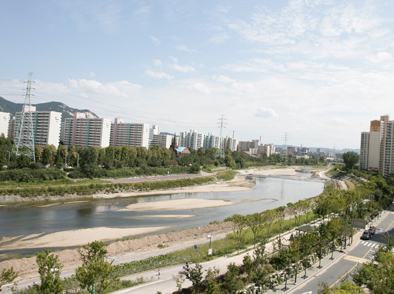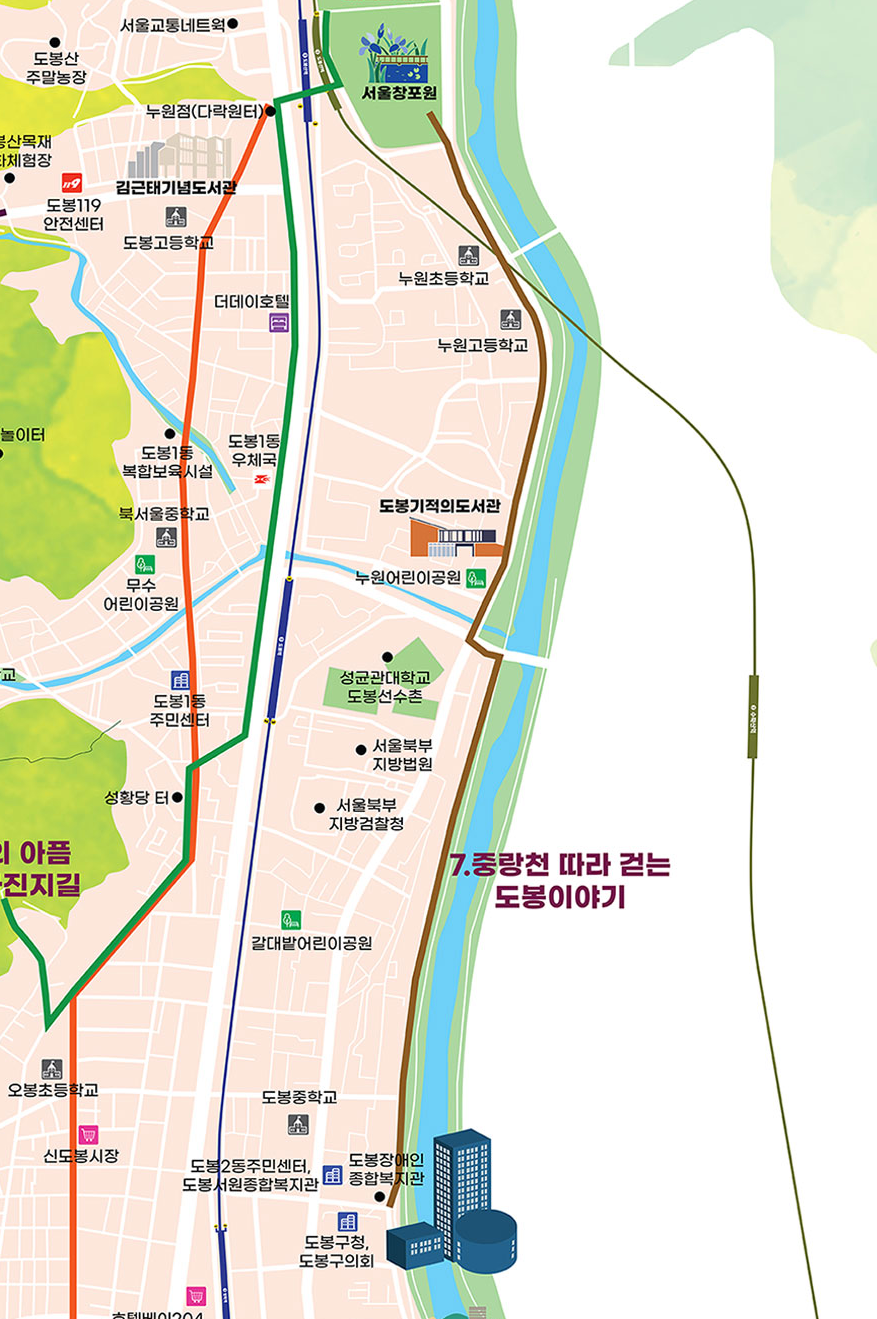
Starting from Dobong District Office to Seoul Iris Garden (Changpowon Park), this exploration course allows local residents to relax and experience the landscape of Jungnangcheon. This is the main river of Dobong, flowing along with its history.

Culture & Sports Division
02-2091-2263
2024-07-02